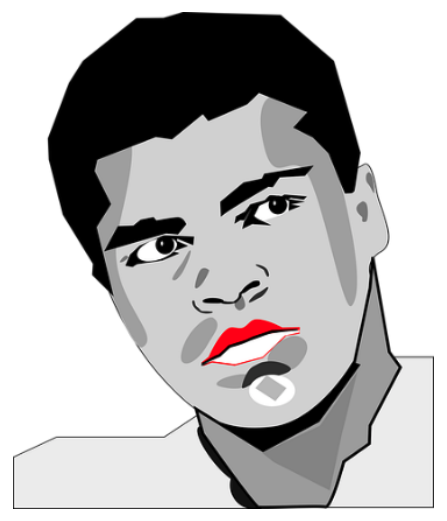[1] In certain instances demeanour evidence may fall into the category of “post-offence conduct”, or it may be gathered during testimony to determine credibility. Demeanour evidence is based on two assumptions; that there are normal or acceptable reactions to certain events and that the outward reactions of an individual are a reflection of their inner emotional state (R. v. Wall, 2005 CanLII 80695).
[2] Dangers in the use of demeanour evidence were highlighted by Rothstein J. in R. v. White, 2011 SCC 13, speaking of hallmark flaws in paras. 75 and 76:
“…Such hallmark flaws are generally associated with evidence in the form of a witness’s impression of the accused’s mental or emotional state (e.g. appeared calm or nervous), as inferred by the witness from the accused’s outward appearance or behaviour. The accused’s mental or emotional state is then submitted as suspect and probative of guilt (see Nelles; R. v. Levert (2001), 2001 CanLII 8606 (ON CA), 150 O.A.C. 208, at paras. 24-27; R. v. Trotta (2004), 2004 CanLII 34722 (ON CA), 191 O.A.C. 322 at paras. 40-43 (an appeal was allowed by this Court and a new trial was ordered, but solely on the basis of fresh evidence, 2007 SCC 49, [2007] 3 S.C.R. 453)).
A problem with such evidence is that the inferential link between the witness’s perception of the accused’s behaviour and the accused’s mental state can be tenuous (Trotta, at para. 40). The witness’s assessment depends on a subjective impression and interpretation of the accused’s behaviour (Levert, at para. 27). Moreover, it appears to involve an element of mind reading (R. v. Anderson, 2009 ABCA 67, 3 Alta. L.R. (5th) 29, at para. 51). Additionally, insofar as the witness is inferring the accused’s state of mind from the accused’s outward appearance, there may be a legitimate concern that this is inadmissible lay opinion evidence. This is to be contrasted with evidence of objective conduct that allows the jury to draw its own inferences about the accused’s state of mind.”
[3] Rothstein refers to elements of mind reading and the subjective interpretation of the state of mind of an accused, based on outward appearance. The link between outward behavior and mental state can be tenuous and it is further marred by subjective impressions (White, 2011).
[4] In R. v. Anderson, 2009 ABCA 67, the trial judge referenced the appellant seeming “unusually quiet” in the area of the crime scene and not looking at the hotel where a person had been murdered. Anderson mentions that there was merit to this complaint because the witness who gave the appellant a ride knew him and may have been in a position to comment on the appellant’s normal demeanour in a “conclusory manner.” The court went on to state that unusual demeanour such as drunkenness or shock may be circumstantial evidence of state of mind. The court then provided a caution about demeanour as a type of evidence in paras. 51 and 52:
“Evidence of an accused’s demeanour is a risky type of evidence. It could be meaningless and prejudicial. The witness Erskine said that the appellant told him he had had a bad sleep. This evidence needed fairly compelling supportive indications of meaning and relevance in order to be of probative value here. Depending on the circumstances, a “demeanour” observation may be the sort of partial evidence that is more prejudicial than probative: R. v. Ferris, 1994 CanLII 31 (SCC), [1994] 3 S.C.R. 756, [1994] S.C.J. No. 97 (QL). In a real sense, demeanour evidence involves a form of mind reading. Accordingly, such evidence should be approached with circumspection where it is proposed to take it to indicate guilty mind: R. v. Turcotte, [2005] 2 S.C.R. 519, [2005] S.C.J. No. 51 (QL), 2005 SCC 50 at paras. 36 to 59.
On the facts here, as the appellant asserts, this demeanour observation of the appellant was more prejudicial than probative. Such demeanour might have been consistent with some internalized concern about the Bentley Hotel, but equally it might have had no meaning at all. To be post-offence conduct, it must be more than neutral: R. v. White, 1998 CanLII 789 (SCC), [1998] 2 S.C.R. 72, [1998] S.C.J. No. 57 (QL). Accordingly, the trial judge erred in leaving this evidence with the jury as part of the package of post-offence conduct on the basis that he did. Whether or not it had some value as part of the narrative, it was simply too ambiguous to support an inference.”
[5] The court stated that the absence of specific evidence about the appellant’s demeanour from the record did not suggest that there was a reasonably possible alternative verdict available. The jury did not use it as evidence of planning and deliberation as they acquitted on the murder count. However, the court stated the demeanour evidence was too ambiguous to support an inference and the trial judge erred in leaving it as evidence with the jury in the way that he did (Andersen, 2009).
[6] In R. v. Levert, 2001 CanLII 8606 (ONCA), the Crown introduced evidence of the appellant’s reaction when confronted with allegations. The evidence was that the appellant was “very, very, very calm”, “not on the defensive at all,” but ultimately denied the allegations. The Crown invited the jury to consider whether the appellant’s reaction was reasonable. There was no objection to this evidence at the time and the court had grave concerns about its admissibility and referenced R. v. Baron and Wertman (1976), 1976 CanLII 775 (ON CA), 31 C.C.C. (2d) 525 (Ont. C.A.) at 542:
“In Director of Public Prosecutions v. Christie (1914), 10 Cr. App. R. 141, [1914] A.C. 545, which constitutes the foundation of the modern law governing the admissibility of statements made in the presence of the accused, the House of Lords held that evidence of an incriminating statement made in the presence of an accused is admissible notwithstanding that there is no evidence from which it could be inferred that the accused acknowledged the truth of the statement or any part of it, if the conduct and demeanour of the accused on hearing the statement are relevant facts in the case (at pp. 160 and 166). If, however, the evidential value of the conduct and demeanour of the accused on hearing the statement is slight and the prejudicial effect of the statement is great, the trial Judge has a discretion to exclude it: Director of Public Prosecutions v. Christie, supra, at pp. 161 and 165.”
[7] The lower court suggested that the evidence of the unusually calm demeanour was evidence of consciousness of guilt. This court then referenced the highly suspect nature of the probative value of this demeanour evidence in para 27:
“The probative value of this type of evidence is highly suspect. In the two recent cases of Susan Nelles and Guy Paul Morin use of the accused’s’ demeanour was found to have played a part in the wrongful prosecution. The Report of The Commission on Proceedings Involving Guy Paul Morin, 1998, vol. 2, pp. 1142 to 1150, contains an extensive discussion of the dangers of admitting such demeanour evidence. The expert and other evidence introduced at the Commission strongly suggests that this evidence can be highly suspect and should be admitted at a criminal trial with caution. Perceptions of guilt based on demeanour are likely to depend upon highly subjective impressions that may be difficult to convey to the jury and in any event the significance of the reaction will often be equivocal.”
[8] Based on the preceding, the court continues on to say that the trial judge “might well have exercised his discretion to exclude this evidence on the basis that the prejudicial effect of the evidence outweighed its probative value.” The court found that a fair trial was not impaired however as the jury would not have attached undue weight to this part of the case and that it only received brief attention in the cross-examination. They stated it would have been preferable for the evidence to have been ignored by the jury, but it did not render the trial unfair (Levert, 2001).
[9] The court in R. v. Enright, 2009 ABCA 236 the court criticized the trial courts reasoning on demeanour evidence in para. 298:
“Finally, Mr. Enright’s father and cousin testified that within an hour of Mr. Longhurst’s death Mr. Enright was in their company. Mr. Lorne Enright testified that he was with Mr. Enright for close to an hour and that his emotional state seemed normal (see para. [86] above). Similarly, the cousin testified that Mr. Enright’s mood was normal (see para. [89] above). That his mood was normal is consistent with the events which had occurred less than an hour earlier in Mr. Longhurst’s house having proceeded as planned. It is not consistent with Mr. Enright having considered those events an unanticipated tragedy. It is consistent with his having planned and deliberated about the murder before committing it.”
[10] The court goes on to state that demeanour alone, as a feature of post offence conduct, is usually neutral when it comes to the determination of the accused’s level of culpability (see e.g. R. v. Arcangioli, 1994 CanLII 107 (SCC), [1994] 1 S.C.R. 129, [1994] S.C.J. No. 5 (QL) at para. 42, drawing from United States v. Myers, 550 F.2d 1036 (5th Circ. 1977); R. v. Jacquard, 1997 CanLII 374 (SCC), [1997] 1 S.C.R. 314, [1997] S.C.J. No. 21 (QL), at paras. 45 ‑ 51). The court states that in many cases such evidence is so ambiguous that admissibility is doubtful (see e.g. R. v. Anderson, (2009) [2009] A.J. No. 176 (QL), 2009 ABCA 67 at paras. 51 ‑ 52). In the alternative, inferences of fact from demeanour could be left to the trier of fact as long as the inference is reasonably available. Ultimately, the trial judge made supportable findings that this was a pre-planned assassination. “If the appellant’s demeanour after the fact were used only to find the appellant’s scenario to be unlikely, there would be no error. The additional inference said to be error here is irrelevant, because once the other facts were resolved the way the trial judge did, the verdict of first-degree murder followed.” The error of law above is the additional inference made from the demeanour (Enright, 2009).
[11] In R. v. Beckett, 2020 BCCA 262, a conviction of first-degree murder was entered by a jury at trial. The court allowed the appeal stating that the judge erred by providing jury instructions that allowed the use of the appellant’s statement to the police as evidence of fabrication. The court also erred by admitting evidence that was characterized as “inherently unreliable demeanour evidence” which let the jury to engage in improper speculation. The court discussed some of the evidence in paras. 58-60:
“Later, he observed Mr. Beckett driving his boat about 50 feet offshore, standing on the bow and “staring him down”. Mr. Titsworth said he felt uncomfortable and told the staff to avoid Mr. Beckett. In cross-examination he acknowledged that for the most part, other than the firewood discussion and the dirty look, Mr. Beckett’s actions that August were completely consistent with his normal behaviour: socializing and boating with other campers, acting as an unofficial host, jovial and a big talker who liked to have a drink.
The defence objected to this evidence on the basis that it was prejudicial evidence of bad character without any probative value. The trial judge ruled that the evidence was admissible because it was possible, from Mr. Beckett’s atypical demeanour, to draw an inference about the state of his marriage. In closing, the Crown submitted that the jury should take from this evidence that Mr. Beckett was acting differently because things were going badly in his relationship with his wife, or that he was fearful that his wife was going to leave him.
In my view, the judge erred in admitting this evidence. A disagreement over firewood and a dirty look or stare down cannot logically lead to an inference about the state of the Becketts’ marital relationship.”
The conviction was ultimately quashed, and a new trial was ordered.
[13] In Furi v. R., 2020 PESC 34, the trial judge relied on the testimony of an employee’s opinion of the condition of the appellant, along with observations of the behavior of the appellant, as proof guilt beyond a reasonable doubt. Regarding the explicit emphasis improperly placed on the demeanour evidence by the trial judge, the court stated the following at paras. 14-15 and 30 to 32:
“I am unable to see a logical connection between the appellant’s passive demeanour in the liquor store and a conclusion, flowing from that demeanour, that his testimony at trial was either not credible or unreliable. This was not a situation where the in-court demeanour of a witness was observed by the trial judge and the overall impression created by his behaviour on the witness stand through gestures, tone of voice, eye contact, and the various other features typically referred to, independently resulted in rejection of the proffered testimony. Had that been the case, given the explicit emphasis placed on demeanour by the trial judge in the absence of other stated reasons, I would have found the credibility assessment to be based on an error of law.
In this case, any credibility finding based on Mr. Furi’s demeanour at the liquor store lacks logical validity. An assertion that the appellant was passive when confronted and his testimony is therefore untrustworthy lacks a connection between premise and conclusion. I am therefore compelled to surmise that the trial judge inferred consciousness of guilt or, more precisely, consciousness of an essential element of the offence (i.e. impairment by alcohol) from the appellant’s demeanour.
…
The demeanour evidence in this case should have been, as prescribed by White, either excluded or disregarded by the trial judge as having no probative value, more prejudicial than probative, or at a minimum the subject of a limiting self-instruction.[12] While I have some doubt that, in the circumstances of this case, the last option would have sufficed, none of those measures are evident from the record. I believe the only reasonable conclusion from the use made of the evidence by the trial judge is that they did not occur.
In reaching this conclusion I wish to be clear that I am not proposing a general rule that demeanour evidence, whether before or after-the-fact can never be the subject matter of inferences regarding the state of mind of the accused.[13] As stated recently in R. v. Calnen, 2019 SCC 6, the specific context of the issue, purpose, and use to be made of the evidence is important.
Since the rejection of the evidence of the accused was unsound, the validity of the trial judge’s W. (D.) analysis must be revisited. This cannot occur without a new trial since the evidence of the accused is integral to the process. For the same reason, this is not an appropriate case for a substitution of the conviction with a verdict of acquittal” (Furi, 2020).
[14] In this case the demeanour evidence given by a witness about the accused amounted to a finding of guilt due to the rejection of the accused’s evidence. The court sent it back for a new trial as it was not appropriate for an acquittal (Furi, 2020).
[15] In R. v. Short, 2019 ONSC 1180, in the two previous trials the jury heard about the actions and reactions of the accused where it was noted the accused “did not cry”, “did not seem to be grieving”, “acted unusually”, “was not at his usual place at the bar”, “odd and not normal”. These actions were being discussed in the context of the murder of his wife. Constable M. testified in front of the jury, that in his experience people in such circumstances did not react as the appellant did, and that he lacked emotion. The officer went o the provide the opinion that he thought the appellant was faking. In the appeal decision of the matter, the demeanour evidence was considered by Doherty J.A. as he provided some direction to the court as follows in paras. 51 – 55:
“The jury heard a great deal of evidence about how the appellant acted or reacted on various occasions on the night of the murder and in the days following. That evidence included testimony from various witnesses that the appellant seemed “normal” or, to the contrary, “unusual”. The jury also heard evidence that some of the things the appellant did and said seemed to others to be contrived or rehearsed.
Evidence describing the demeanour of an accused when he did or said something can be admissible. The demeanour may be sufficiently unambiguous to give it probative value, or it may be an integral part of the witness’s description of the relevant event: R. v. Trotta (2004), 2004 CanLII 34722 (ON CA), 190 C.C.C. (3d) 199 (Ont. C.A.), at para. 41.
Demeanour evidence is, however, often of little or no probative value. There is also a real risk that a jury might give too much weight to demeanour evidence unless clearly cautioned that the evidence can be misleading and often provides little or no real insight into a person’s state of mind, or the reasons for that person’s actions: R. v. Levert (2001), 2001 CanLII 8606 (ON CA), 159 C.C.C. (3d) 71 (Ont. C.A.), at para. 27; R. v. Wall (2005), 2005 CanLII 80695 (ON CA), 77 O.R. (3d) 784 (C.A.), at paras. 49-50.
At the new trial, the trial judge may conclude that some of the demeanour evidence has virtually no probative value and should not be admitted. For example, if a witness describes the appellant as acting “unusually”, but does not know the appellant and cannot articulate any basis upon which the witness formed his or her opinion about the appellant’s behaviour, the trial judge may well conclude that the witness’s opinion about the appellant’s behaviour has no probative value and should not be admitted.
To the extent that demeanour evidence is properly before the jury, the trial judge must be careful to instruct the jury about the risks inherent in drawing inferences from a witness’s description of someone else’s demeanour: see Wall, at paras. 49-50” (Short, 2019).
[16] The court went on to find that the witnesses who provided comments about the appellant, who were friends from the bar he frequently attended, were not in a position to comment on what might be “normal, unusual, or odd” about the actions of the appellant. The court also found that the opinion of Constable M. was clearly of no probative value. While the witnesses may have been able to testify about the actions of the appellant, the interpretation of those actions made the evidence “dangerous”. The court found the evidence to be of virtually no probative value, and thus inadmissible (Short, 2019).
Other Cases to Consider:
R. v. Baltrusaitis, 2002 CanLII 36440 (ON CA), [2002] O.J. No. 464 (Ont. CA);
R. v. Trochym, 2004 CanLII 1262 (ON CA), [2004] O.J. No. 2850 (Ont. C.A.) reversed on other grounds 2007 SCC 8;
R. v. Perlett, 2006 CanLII 29983 (ON CA), [2006] O.J. No. 3498 (Ont. C.A.);
R. v. Crerier, 2010 Q.C.C.A.; R. v. J.S.W. 2013 ONCA 593;
Michif Child and Family Services v. V.E.M.B. et al, 2016 MBCA 13;
R. v. Short, 2018 ONCA 1;
R. v. Chafe, 2019 ONCA 113;
R. v. N.M., 2019 NSCA 4;







